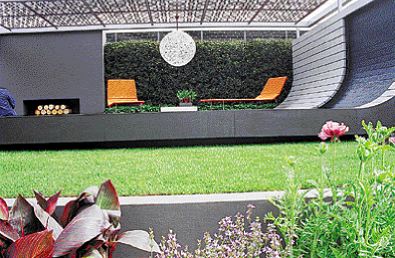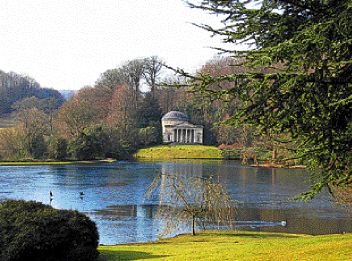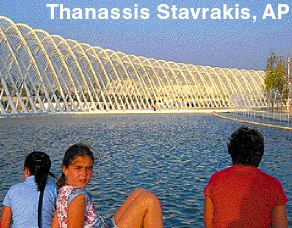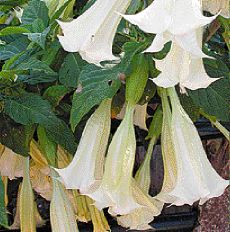 |
||
|
Greening Our Living Spaces |
||
|
Landscape architects work with plants and paving to create attractive urban areas, public parks and private homes Jennifer Gay |
 Modern garden design consecrates on private enclosed space |
|
The Olympic projects gave Athens a chance to plan spaces with a pleasant landscape in mind from the outset, and though we did see some upgrading of downtown areas, over-running building budgets and last-minute planting didn't transform the city into the green Athens we all hoped for. Many northern European cities have been more fortunate during the rapid urbanization of the 20th century. Time and resources spent on civic design are evident in the parks, squares, walkways and pedestrianized streets which make some cities truly pleasant places to be. It will come as no surprise that in such countries the profession of landscape architect is widely active and plays a significant role in the planning and design of most major public and private construction and infrastructure projects. The profession, though slowly growing, remains less established in southern and eastern Europe. Many people confuse landscape architecture and garden design; though the two professions have a shared and ancient heritage they are distinct arts. Landscape architecture is concerned with all types of external space, most significantly (but not necessarily), public space, whether it be large or small, urban or rural. Modern societies need landscape architects for each and every land use category - their role is not only to conserve and protect landscape features of value and importance but also to create new public spaces for today's demanding world. Working with both hard materials (paving, walls etc) and soft materials (plants), landscape architects are involved in civic design and public infrastructure, including schools, universities, hospitals and hotels, public parks, sports facilities, housing areas, industrial parks and commercial developments. They also work on forestry projects, mineral extraction, transportation routes, water storage as well as historic landscapes. In countries where accountability matters, landscape architects also play a key part in vital environmental assessments as part of the planning process - in such systems, every large scale development requires a full assessment as part of the evaluation process. In the UK, Germany and Holland most planning authorities employ an in-house landscape architect to comment on planning applications, and developers must offer solutions to mitigate any unsightly or damaging aspects of their proposals. |
||
| The origins of landscape architecture are relatively recent, with roots in early garden design (nowadays garden design is essentially concerned with enclosed private space). The first person to write of "making a landscape" was Joseph Addison in 1712. The first professional designer to use the term "landscape gardener" was Humphry Repton in 1794, when England was becoming the focus of a new landscape design style. The 16th and 17th centuries had seen a great revival in the art of formal garden design, the ultimate being achieved through the work of Andre Notre at the Palace of Versailles in France. However, England took the helm in the 18th century with figures such as Repton, William Kent, and Lancelot "Capability" Brown remodelling the great estates of the English gentry to resemble a sanitized version of nature. |
 Stourhead in Wiltshire, England, was designed and laid out by the early landscape gardener Henry Hoare between 1741 and 1780 based on inspiration from his travels through Europe, particularly Italy |
|
| It wasn't until 1863 that the term "landscape architect" was first used as a professional title by the American Frederick Law Olmstead, who completed a series of parks which continue to have a huge influence on the practice of landscape architecture today. Among these were Central Park, New York, Prospect Park, Brooklyn and Boston's "Emerald Necklace" park system. During the 19th century, urban planning had became a necessity and it was the combination of modern planning with the tradition of landscape gardening that gave landscape architecture its unique focus. The ancient skill of garden design - the composition of landform, water, vegetation and structures was applied to the man-made landscape. The eminent landscape architect Sir Geoffrey Jellicoe wrote in The Landscape of Man in 1975, "It is only in the present century that the collective landscape has emerged as a social necessity. We are promoting a landscape art on a scale never conceived of in history." The use of the term "landscape architect" became established after the American Society of Landscape Architects was founded in 1899. In Europe the first national professional association of landscape architects was the Bund Deutscher LandschaftsArchitekten (BDLA), initiated in 1914. In 1948 the International Federation of Landscape Architects was formed followed by the European Foundation for Landscape Architecture (EFLA). There are now national associations in most European countries and as the EU expands, the profession is playing an integral part in creating viable and attractive spaces. |
||
In Greece, the profession remains in its infancy. The government has signed the Council of Europe's European Landscape Convention and by doing so, has demonstrated a commitment to the Greek landscape and to promoting landscape education. But... it has yet to ratify it. There are up to one hundred landscape architects practising here in both the public and private sectors, but even in a country where the profession is poorly understood, the need far exceeds supply, with the result that overseas consultants are often employed on projects. The number of graduates emerging from Greek universities is minimal with most students seeking to train for the profession having to study abroad. The University of Thessaloniki has recently achieved EFLA accreditation for its postgraduate landscape architecture programme. |
 Athens 2004 offered great opportunities for creating green spaces, but last-minute efforts meant promised plans did not come to fruition |
|
On September 15, the Landscape 2006 Symposium will be held at the Ionic Centre, 11 Lysiou St, Plaka, Athens, with the aim of setting up a platform for exchange of experiences for the benefits of countries seeking to develop the landscape architecture profession. The symposium will bring landscape architects together with other professionals to consider their experiences of achieving recognition in northern and southern Europe. The symposium hopes to develop proposals and initiatives for the establishment of landscape architecture in the wider Mediterranean world. The organizers suggest the symposium will be of interest to landscape architects across Europe, those advising and employing landscape architects, as well as closely linked professionals such as town planners, urban designers, agriculturists, foresters and interior designers. * For further information visit the website www.landscape2006.com, where you can download the registration form. Please book early as places are strictly limited. You can also email info@landscape2006.com |
||
|
Perfect pot plant
THE EVERGREEN Angel's Trumpets, Brugmansia arborea, has dramatic fragrant white flowers and is native of the Andes of Ecuador, Peru and northern Chile. It makes a great late- summer accent in a pot. Grow in full light in loam-based compost, applying a balanced liquid fertilizer once a month. |
 |
|
|
Gardeners' queries |
||
(Posting Date 15 September 2006) HCS readers can view other excellent articles by this writer in the News & Issues and other sections of our extensive, permanent archives at the URL http://www.helleniccomserve.com./contents.html
All articles of Athens News appearing on HCS have been reprinted with permission. |
||
|
||
|
2000 © Hellenic Communication Service, L.L.C. All Rights Reserved. http://www.HellenicComServe.com |
||

